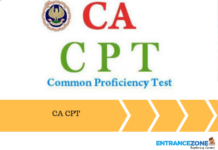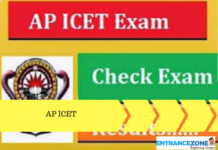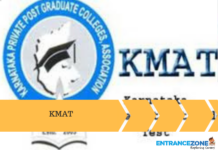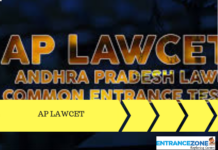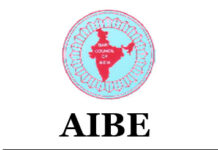NCERT Solutions Chemistry Class 12 is available here in free PDF format. The NCERT Solutions for Class 12 Chemistry is based on the latest CBSE syllabus and NCERT textbook. Those who are aspiring to sit for the CBSE board exam can download the NCERT Chemistry Class 12 Solutions. The solutions of CBSE class 12 will help the students to understand and solve some of the most difficult questions. Once the students have completed the syllabus, they can start solving the sample question papers. After solving the question, if there is any confusion, the students can take help from the NCERT class 12 Solutions. Read this article to download the chapter-wise NCERT class 12 Chemistry Solutions pdf.
Admission Open 2023
- Top University & Colleges Official Links, Application & Scholarship Forms.
NCERT Solutions for Class 12 Chemistry
CBSE prescribes the NCERT textbook in class 12 for board exams. The questions asked in the annual board exams are from the prescribed course material. Therefore, students are requested to download the study material and sample papers for exam preparation. Chemistry is an important subject in CBSE Class 12th boards. It mainly comprises organic, inorganic, and physical elements of Chemistry. Therefore, the NCERT Chemistry class 12 solutions will help the students in preparing for the board exams along with competitive exams.
NCERT Solutions for Class 12 Chemistry Chapter 1 The Solid State
Chapter 1 of CHemistry NCERT gives a detailed description of the correlation between structure and properties of solids, which in turn will help in discovering new solid materials with desired properties like high-temperature superconductors, biodegradable polymers for packaging, etc. This chapter explains crystalline and amorphous solids, as well as imperfections in solids. It explains the unit cell in detail and then builds up to explain the solid-state. The solutions are made in accordance with the NCERT text. So, the students can solve the exercise questions and take help from the NCERT Solutions for Class 12 Chemistry Chapter 1.
Subscribe to Get Updated Information about NCERT Solutions Chemistry Class 12: Download Chapter-Wise Solutions pdf - Admissions
NCERT Solutions for Class 12 Chemistry Chapter 2 Solutions
Chapter 2 of NCERT Chemistry for Class 12 is about the detailed description of the concept of Solutions. There is a detailed analysis of the various types of solutions and their properties. The concepts dealt with are Raoult’s law, the concentration of solutions, vapor pressure of liquid solutions, abnormal molar masses, and colligative properties. The back and in-chapter exercises are made to reinforce the concepts, and the solutions aid the students in the same. So, the students can solve the exercise questions and take help from the NCERT Solutions for Class 12 Chemistry Chapter 2.
NCERT Solutions for Class 12 Chemistry Chapter 3 Electrochemistry
Electrochemistry is about the galvanic cell and the electrolytic cell. The chapter explains the standard potential of the cell, Gibbs energy of cell reaction, and the relation with the equilibrium constant. The students will learn the Kohlrausch Law and its applications. The theoretical and practical considerations of this chapter are extremely important. Students will also learn about the types of electrochemical cells. So, the students can solve the exercise questions and take help from the NCERT Solutions for Class 12 Chemistry Chapter 3.
NCERT Solutions for Class 12 Chemistry Chapter 4 Chemical Kinetics
Chemical Kinetics is the branch of chemistry where you will study factors affecting the rate of reaction and mechanism involved in various chemical reactions. In this chapter, you will also learn different orders of reactions- zero order, first order, and second-order, depending upon the sum of powers of concentration terms. The topics covered include the factors affecting the rate of a reaction, the integrated rate equation, Pseudo First Order reactions, and the collision theory of chemical reactions. So, the students can solve the exercise questions and take help from the NCERT Solutions for Class 12 Chemistry Chapter 4.
NCERT Solutions for Class 12 Chemistry Chapter 5 Surface Chemistry
NCERT Chemistry chapter 5 explains the concept of emulsions, adsorption, isotherms, factors controlling the adsorption of gases and liquids, and catalysts and their role in industry, preparation, colloids, gel formation. Students will also learn about the process of adsorption and how it is different from the process of absorption. Based on the type of atomic force involved, adsorption is classified into physical and chemical adsorption. So, the students can solve the exercise questions and take help from the NCERT Solutions for Class 12 Chemistry Chapter 5.
NCERT Solutions for Class 12 Chemistry Chapter 6 General Principles and Processes of Isolation of Elements
Chapter 6 includes various terminologies from earlier classes, such as minerals, ores, the process of metallurgy, refining, chromatography, etc. This chapter also explores the occurrence of metals, the concentration of ores, cleaning, and extraction, of crude metal from ores, thermodynamic and electrochemical principles of metallurgy, and the refining process. So, the students can solve the exercise questions and take help from the NCERT Solutions for Class 12 Chemistry Chapter 6.
NCERT Solutions for Class 12 Chemistry Chapter 7 The P-block Elements
The chapter deals with the Group 15 elements, Oxides of Nitrogen, Allotropes of Phosphorus, Group 16 elements, simple oxides, allotropes of sulfur, chlorine, and other elements. The p-Block elements comprise group 15 elements (nitrogen family), group 16 elements, group 17 elements (halogens), and group 18 elements (the noble gases). So, the students can solve the exercise questions and take help from the NCERT Solutions for Class 12 Chemistry Chapter 7.
NCERT Solutions for Class 12 Chemistry, Chapter 8 The D and F Block Elements
In this chapter, there is a detailed description of the properties of transition elements, colored ions and complex compounds, variation in sizes of elements, ionization enthalpies, magnetic properties, and oxidation states. The chapter deals with d block elements and their properties and variations. The d-Block elements are also called transition elements, whereas the f-block elements are alternatively called inner-transition elements. In the last topic of this chapter, students will study the properties of lanthanides and actinides. So, the students can solve the exercise questions and take help from the NCERT Solutions for Class 12 Chemistry Chapter 8.
NCERT Solutions for Class 12 Chemistry Chapter 9 Coordination Compounds
In chapter 9 of Chemistry, students are taught about complex compounds. Each central atom in a compound maintains coordination with a suitable number of anions or neutral molecules. Further, the chapter will introduce you to the types of isomerism shown by coordination compounds. Later, you will study the assumptions made in crystal field theory and its drawbacks. Before the chapter meets its conclusion, you will be able to enlist the importance and applications of coordination compounds. So, the students can solve the exercise questions and take help from the NCERT Solutions for Class 12 Chemistry Chapter 9.
NCERT Solutions for Class 12 Chemistry Chapter 10 Haloalkanes and Haloarenes
In Chapter 10 of Chemistry for class 12 students will learn the concepts of IUPAC nomenclature of Haloalkanes and Haloarenes. They will also learn the applications of organometallic reactions, preparation of haloalkanes and haloarenes, and stereochemistry. The students also learn the chemical reactions of haloalkanes and important terminologies such as freons and chloroform are highlights of this chapter. So, the students can solve the exercise questions and take help from the NCERT Solutions for Class 12 Chemistry Chapter 10.
NCERT Solutions for Class 12 Chemistry Chapter 11 Alcohols, Phenols, and Ethers
Chapter 11 of Chemistry deals with the chemical properties of Carbon when replaced with the -OH atom forming Alcohols and Phenols. By the end of this chapter, you will be able to correlate the physical properties of Alcohol, Phenols, and Ethers with their structures. So, the students can solve the exercise questions and take help from the NCERT Solutions for Class 12 Chemistry Chapter 11.
NCERT Solutions for Class 12 Chemistry Chapter 12 Aldehydes, Ketones, and Carboxylic Acids
In this chapter, you will learn about the classification of alcohols, phenols, and ethers. Next, you will study the stepwise procedure for preparing alcohols from alkenes and carbonyl compounds. Likewise, this chapter also consists of the preparation processes of phenols and ethers. In the end, you will study the physical and chemical properties of alcohols, ethers, and phenols.
NCERT Solutions for Class 12 Chemistry Chapter 13 Amines
This chapter deals with the preparation, physical properties, and chemical reactions of Amines, the methods to prepare diazonium salts, the importance of diazonium salts in the synthesis of Aromatic Compounds. Amines constitute one of the essential organic compounds as they are used even in manufacturing polymers, dyestuffs, and drugs. Amines can be further divided into primary, secondary, and tertiary amines.
NCERT Solutions for Class 12 Chemistry Chapter 14 Biomolecules
Chapter 12 of Chemistry, students will learn about glucose, fructose, starch, etc., classification of carbohydrates, nucleic acids, proteins, and vitamins on the basis of their structures, characteristics of biomolecules, differences between DNA and RNA, the role of biomolecules in the bio-system.
NCERT Solutions for Class 12 Chemistry Chapter 15 Polymers
Chemistry chapter-15 Polymers, you will study the definition of a polymer and delve deeper into its concepts. Further, you will study the classification of polymers based on the source, the structure of polymers, the mode of polymerization, and molecular forces. Students will also learn about two broad types of polymerization reactions. Basic terminologies that are part of this chapter include copolymerization, natural rubber, vulcanization of rubber, and biodegradable polymers.
NCERT Solutions for Class 12 Chemistry Chapter 16 Chemistry in Everyday Life
The last chapter is about the importance of chemistry in everyday life. NCERT Class 12 Chemistry Solutions for chapter-16 include solved questions based on drugs, antacids, antihistamines, tranquilizers, analgesics, antibiotics, and many more day-to-day chemicals. Also, the students will learn about the importance of artificial sweeteners and food preservatives. Finally, you will find questions related to soaps and detergents.
NCERT Solutions for Class 12 Chemistry All Chapters
NCERT Chemistry Class 12 Solutions are given below for all chapters. Students can click on the link of the respective chapter number to download Class 12 Chemistry NCERT chapter-wise solutions.
| Name of the Chapter | PDF Link |
| Chapter 1 – The Solid State | Download PDF |
| Chapter 2 – Solutions | Download PDF |
| Chapter 3 – Electrochemistry | Download PDF |
| Chapter 4 – Chemical Kinetics | Download PDF |
| Chapter 5 – Surface Chemistry | Download PDF |
|
Chapter 6 – General Principles and Processes of Isolation of Elements
|
Download PDF |
|
Chapter 7 – The p-Block Elements
|
Download PDF |
|
Chapter 8 – The d-Block and f-Block Elements
|
Download PDF |
|
Chapter 9 – Coordination Compounds
|
Download PDF |
|
Chapter 10 – Haloalkanes and Haloarenes
|
Download PDF |
|
Chapter 11 – Alcohols, Phenols, and Ethers
|
Download PDF |
|
Chapter 12 – Aldehydes, Ketones, and Carboxylic Acids
|
Download PDF |
| Chapter 13 – Amines | Download PDF |
| Chapter 14 – Biomolecules | Download PDF |
| Chapter 15 – Polymers | Download PDF |
|
Chapter 16 – Chemistry In Everyday Life
|
Download PDF |
Other Important Links on CBSE Class 12



